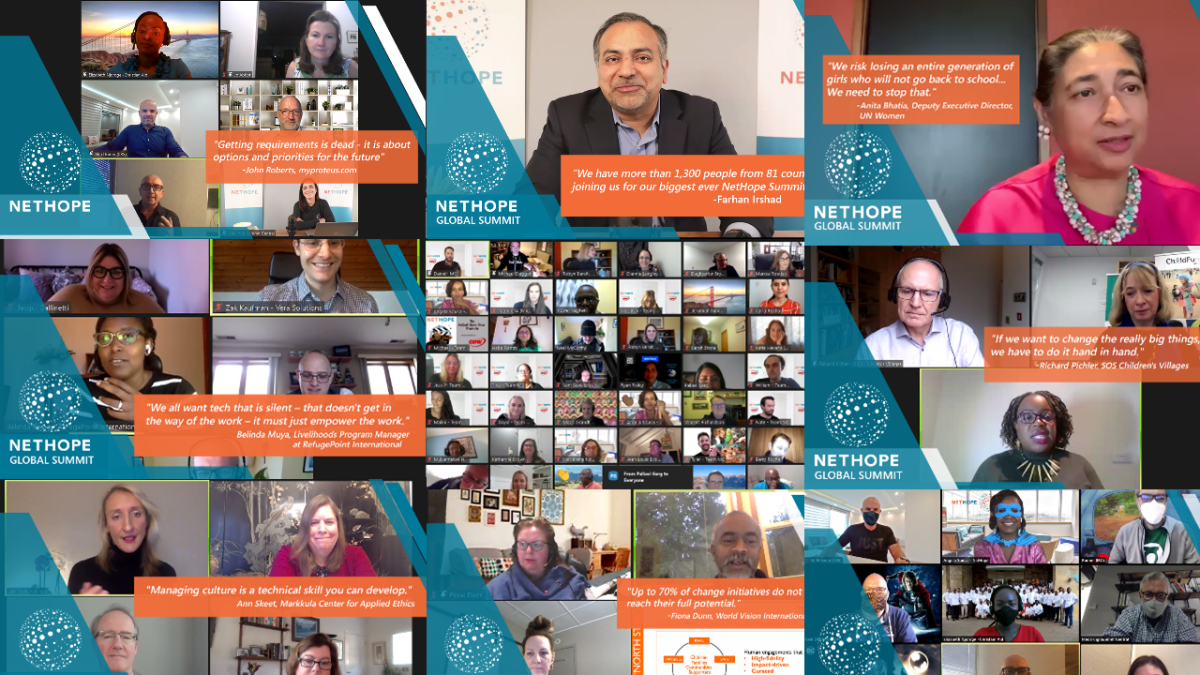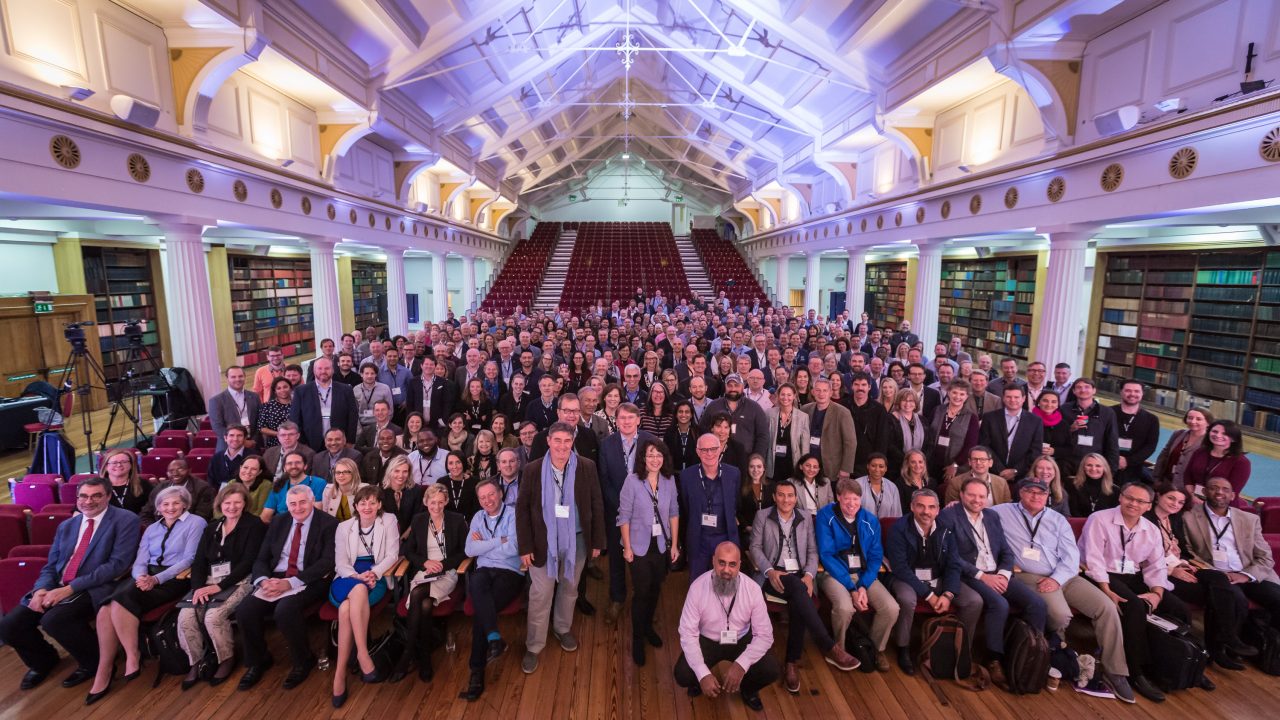The team at NetHope is passionate about social impact. A quick glance at their resumes reveals a group of experienced nonprofit leaders dedicated to solving some of the biggest, most intractable global problems—poverty, hunger, climate change, literacy.
But the whole is greater than the sum of its parts. NetHope doesn’t focus on a single priority; they maximize the efficacy of the international nonprofit sector overall, helping them to “do good better.” Through NetHope’s technical support and convening, their network of more than 60 nonprofit Members around the world work together to accelerate their collective impact through the use of technology.
Chronically, information technology is an underfunded element of humanitarian aid, but I’ve had the privilege of seeing many, many organizations change and transform through the world of digital.
Jean-Louis Ecochard Global Head of Innovation, Senior Director of The Center for the Digital Nonprofit NetHope
The Challenge
In the nonprofit sector, where stakes are high and leaders are mission-driven, limited funding is often driven primarily towards direct aid, services, and programming. And understandably so. Donors and staff alike want to see how their contributions are directly benefiting those most in need.
When The Center for the Digital Nonprofit started at NetHope, though, the team saw untapped potential in technology as a way to accelerate and improve program efficiencies and stretch limited financial resources.
“Chronically, information technology is an underfunded element of humanitarian aid, but I’ve had the privilege of seeing many, many organizations change and transform through the world of digital,” said Jean-Louis Ecochard, Global Head of Innovation and Senior Director of The Center for the Digital Nonprofit.
From lack of internet access in some countries to limited capacity to connect and partner with tech solution providers, many nonprofits were on their own when it came to understanding and leveraging technology.
Too often, they were also starting from a blank page exploring approaches that had already been vetted by peer organizations but not shared broadly. NetHope instead brings those organizations together to leverage each other’s expertise and find ways to collectively optimize technology and accelerate change.
The Solution
The Center for the Digital Nonprofit at NetHope helps Members navigate that journey in several ways:
- Bringing organizations together for peer-to-peer learning
- Connecting them with technology providers
- Increasing organizational capacity through skills building
- Providing a suite of open-source tools and resources to help all organizations, even those beyond their membership, to embark on digital transformation.

Conversations within the network may result in a NetHope Member recommending one software over another to their peers. Or a nonprofit may not be large enough for a satellite company to do business with them, but if they join forces with others, they have the collective buying power to do business. Through the NetHope network, nonprofits workers teach each other the critical digital skills needed for the successful implementation of digital solutions at all levels of an organization. At the most significant end of the scale, nonprofits are completely reevaluating their approach to information technology and data infrastructure.
I love the idea that you can make a 1% difference in the NetHope network and so make a massive sectoral transformational change because of the reach and the depth of what we do here.
Dianna Langley Chief Operating Officer NetHope
In one particularly memorable example, the team recalls that about a decade ago, NetHope’s Project Reconnect distributed tablets to refugees arriving in Germany to aid with language acquisition through over 24 nonprofits. Last year, in the midst of the pandemic, the program administrator noted that many of the tablets were turning back on and using the Internet again, this time to continue to earn and learn from home. At a time when people needed it most, technology provided once again a lifeline.

That is NetHope’s theory of change: technology has the power to act as an enabler and accelerator of social impact. And that is the case they continue to make for a growing community of nonprofits that works across 180 countries and represents the equivalent of about $26 billion of annual aid.
Dianna Langley, the Senior Director of Engagement at NetHope, says the connection between Members is incredible to witness. The impact of being able to compare notes and learn from one another cannot be overstated, but NetHope takes it a step further, bringing tech to the table.
“The very next step that NetHope took was to involve technology companies. Design for us; make for us,” she said. “If nonprofits get together and say, ‘collectively we have this need,’ then technology companies get a stronger signal about what they could actually change for greater impact for the nonprofits.”
That catalyzing effect is what excites Langley most.
“I love the idea that you can make a 1% difference in the NetHope network and so make a massive sectoral transformational change because of the reach and the depth of what we do here,” she said.
A significant part of that change is empowering nonprofits to work smarter and increase impact, but just as important, is their work to transform the system and influence big tech. NetHope argues that designing and marketing technology solutions for social impact isn’t just about altruism – it’s also just good business.
“The tech companies view the nonprofit market as a niche market. There are more nonprofits than there are oil and gas companies, and yet there is more software spent on the oil and gas business than there is in the social good sector,” said Ecochard.
Langley quickly jumps in, adding that there is more spent on the domestic pet market in the U.S. than on nonprofits globally.
Part of the inequity is born from what Ecochard calls the “snowflake effect” in the nonprofit world. Nonprofit organizations lean heavily into what sets them apart and are less primed than their for-profit counterparts to develop or accept so-called industry standards that make it easier for the tech sector to design for corporations. NetHope is trying to shift that thinking, simplifying the scaling of technology solutions.
“We hope that through NetHope, we can create those data standards,” Ecochard said, adding that with more widely agreed-upon data standards, the tech sector will have a clearer roadmap for how to best serve nonprofits in the future.
The Takeaway
Still, there is work to be done to anchor relationships in collaboration.
NetHope strives to build trust in both camps, illustrating for nonprofits the value in collaborating with and learning from tech, and helping tech companies to design products and services that are responsive to nonprofits.

As many companies experience a positive shift towards socially responsible practices, NetHope helps build relationships with companies that demonstrate an authentic willingness to learn and adapt to meet the needs of the nonprofit sector.
They do it all – relationship building, convening, and capacity building – with a lean team of 12 but they are supported by a strong network of volunteers and Members (current and former) who continue to stay engaged to advance the necessary culture shift where IT and data infrastructure are prioritized by nonprofits, and nonprofits are prioritized by tech.


